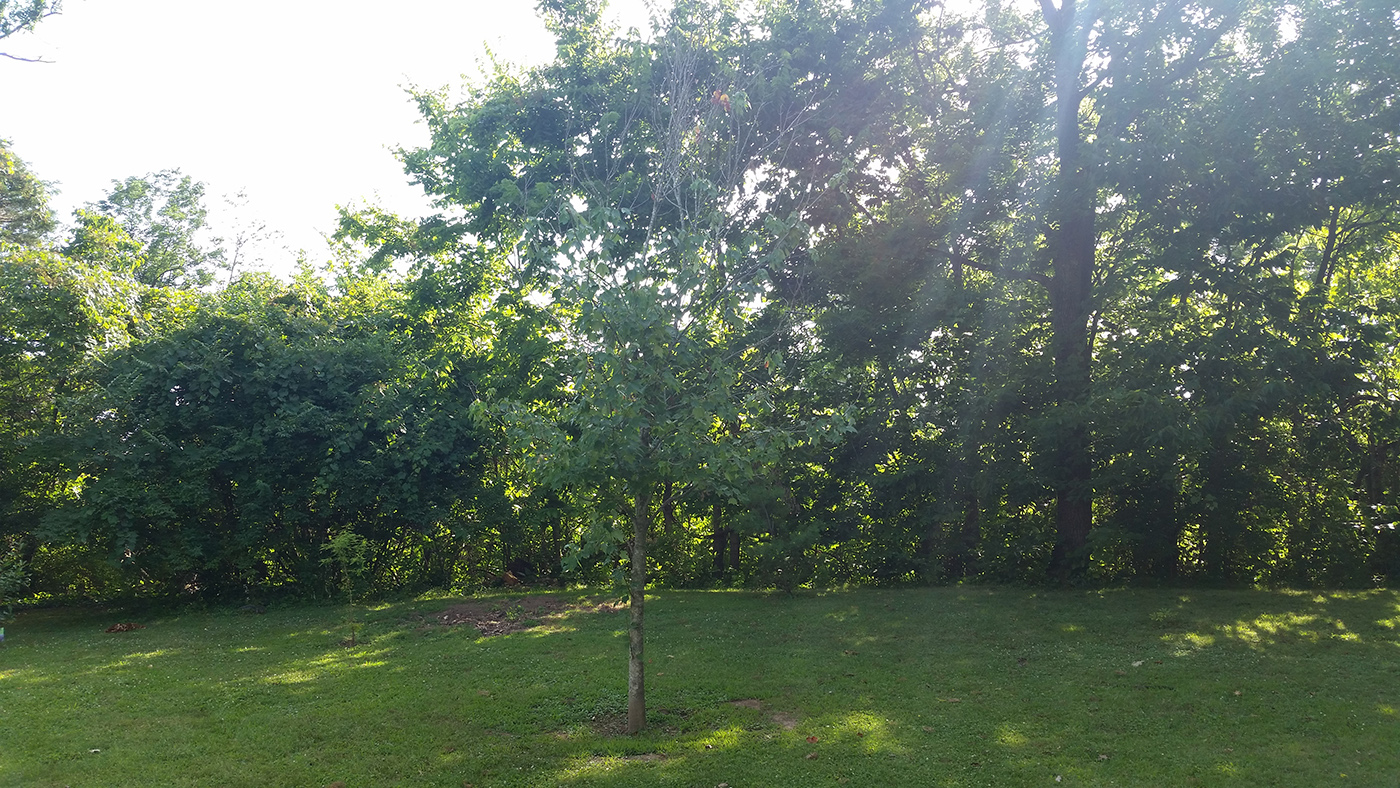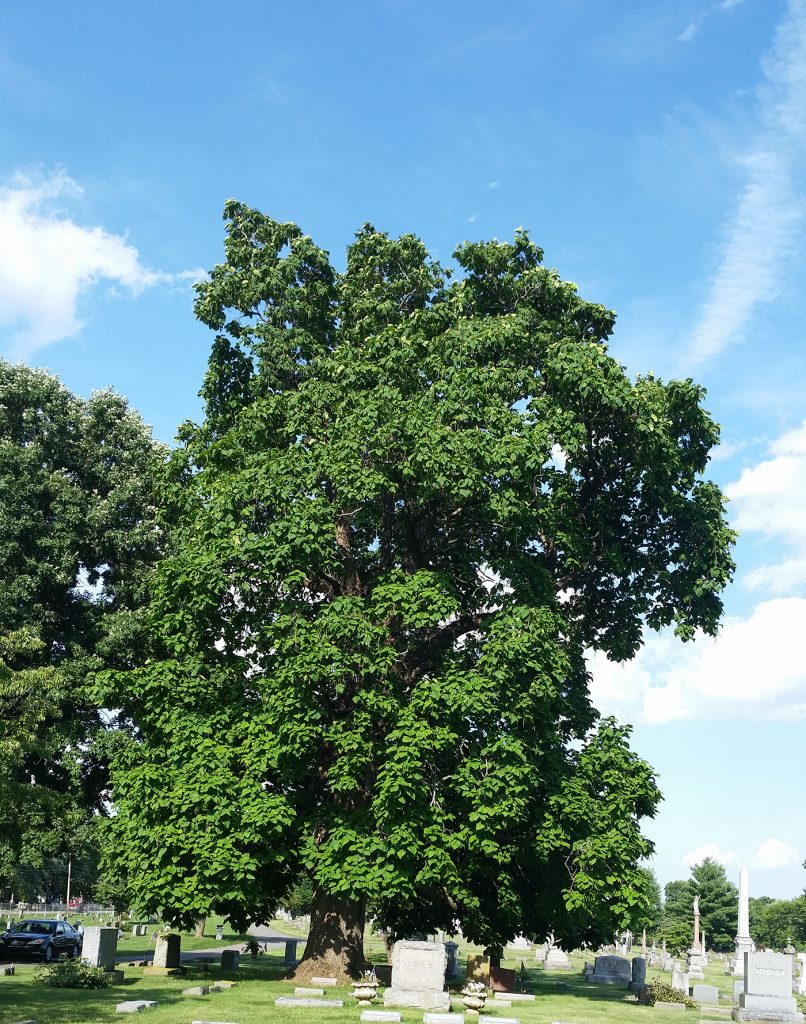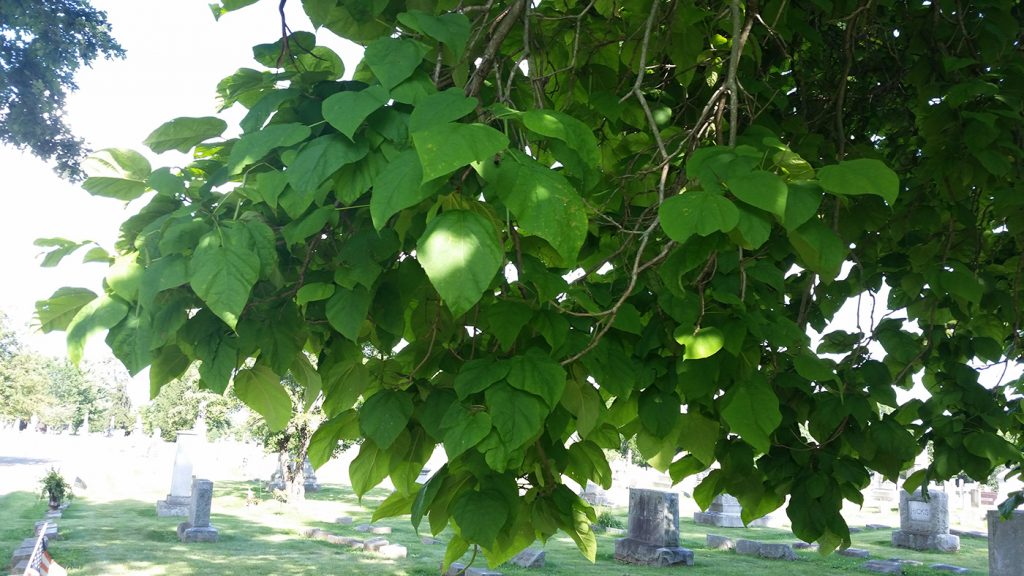Tough Tree Decisions

My heart breaks for my red sunset maple. Mom bought the tree for me in 2012, our first summer in our current and final home. She had the nursery plant it. She wanted me to have a nice big shade tree near my kitchen. The tree was over 12 feet tall at planting, and the nursery staked it for stability. I watered the tree frequently and did everything I could to ensure it got a good start in life. Unfortunately, the tree had issues from planting that could not be solved by watering and staking.
In 2013 I noticed that the tree was not growing as quickly as it should. The red sunset maple touts a vigorous growth habit much like the autumn blaze maple I planted at my previous home. My autumn blaze thrived, but this tree languished. I didn’t know if it took the red sunset maple longer to get established, but everything I read said otherwise.
By 2014 the tree started to show some crown dieback with sparse leaves in the upper branches. I thought it was due to our unusually harsh winter and waited for it to recover. Afterall we just endured a polar vortex with strong winds. I figured any tree would struggle after such a winter, and many trees in my yard did struggle. My crepe myrtles in particular took a beating.
Last year the tree looked even worse with significant crown dieback. Whole branches including the main leader lacked leaves. I hopped online and figured out the problem. The nursery had planted the tree too deeply. It looked like an electrical pole stranding out of the ground. Trees should have a root flare (or collar) at the base, and my tree did not. I read up on root crown excavation, and I started digging. Roots were wrapped around the trunk above the root crown, strangling the tree. I cut away the extraneous surface roots, and I continued digging. I located the root flare at the base of the trunk and continued digging around it. I found larger roots that encircled the base of the tree. I cut those roots away. I probably should have called a professional to come and lift up the tree and examine the roots underneath, but my instincts told me that the tree might be too far gone for such a costly endeavor. I cut away part of the crown dieback and applied pruning seal. I wrote about it. I watered. I watched. I waited.
This spring showed signs of promise, but more upper branches dropped leaves as the spring continued. Now the upper branches have no leaves at all. My red sunset maple is a shadow of the tree it once was, and all my hopes for a beautiful shade tree have faded with it. As the summer wears on I know the end game for this tree, and it involves a chainsaw. My heart breaks every time I look at it. That beautiful symbol of my first summer in my forever home is dying.
 Though this is not the best photo (it’s a little dark), it shows the extensive crown dieback in my red sunset maple.
Though this is not the best photo (it’s a little dark), it shows the extensive crown dieback in my red sunset maple.I spoke with a representative of the nursery, and he claimed no blame, but he offered to plant a smaller tree for me. I explained to him in-depth how the tree was planted too deeply and then buried in a mulch mound. He told me that the trees in balled burlap do just fine and that he plants them in the burlap, which later decomposes. Even his explanation showed his ignorance about the proper planting of trees. The burlap should have been removed prior to planting. They should have looked for the root flare, even cutting away strangling surface roots to get to it. The tree should have been planted with the root flare (also called a root collar) at soil level.
If you are planting a tree yourself, please read up on proper tree planting techniques. If a nursery is doing it for you, read up on proper technique and watch them plant the tree. Don’t just assume that they’ll do it correctly.
As for me I have to look toward the future and figure out a shade tree that will grow quickly in the old tree’s location. My mind keeps turning toward the catalpa (or catawba). Though the tree produces debris from its flowers and seed pods, it also has an interesting branching habit with strong wood and big leaves. I have not located a nursery that carries catalpas, but I hope to find one soon. This fall I will plant my new tree, and though I will have to wait longer for my shaded kitchen, I look forward to beautiful blooms and gnarled winter shadows…
 The catalpa is a stunning tree in the landscape with dense shade and twisted branching habit. This majestic catalpa lives at my local cemetery. Though I might not ever live to see my catalpa grow so large, I hope that adding a catalpa to my yard will bring joy to others in the years to come.
The catalpa is a stunning tree in the landscape with dense shade and twisted branching habit. This majestic catalpa lives at my local cemetery. Though I might not ever live to see my catalpa grow so large, I hope that adding a catalpa to my yard will bring joy to others in the years to come. With large green leaves and big white flowers in the spring, the catalpa provides dense shade and animal habitat.
With large green leaves and big white flowers in the spring, the catalpa provides dense shade and animal habitat. The catalpa’s twisted branching habit adds winter interest.
The catalpa’s twisted branching habit adds winter interest.